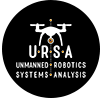RemoteID is scheduled to start rolling out in September of this year in the U.S. In very simple terms, RemoteID require almost all drones to broadcast their location in real time and, with appropriate access, provide additional metadata about the drone and its operator.
If properly implemented, RemoteID can replace almost all existing domestic counter-UAS (CUAS) and airspace awareness services. It will not address non-compliant drones but it will dramatically reduce the current clutter representing compliant operators and thus allow us to focus quickly on the non-compliant operators.
Low cost bluetooth receivers can be integrated into a variety of existing and future products to add drone airspace awareness. Pair such a receiver with the crowd sourced ADSB receivers and drone tracks can be added to existing flight trackers. A mobile application that receives the RemoteID data can collaborate with other apps or physical sensors to dramatically increase coverage.
This broad access to the data does not come without risks, known and unknown. For example, if everyone can determine the location of the drone’s operator it may lead to privacy and safety risks.
CUAS vendors may face the most significant risks from RemoteID as most of the data they currently collect using expensive, proprietary sensors will be available to the public at large at a very low cost. Further, RemoteID will provide data about all UAVs, not just DJI or the ones in a CUAS’ library. Vendors with the best data management, presentation, and analysis capabilities will likely be the winners of this disruptive event while those firms that depend on revenue associated with deploying and operating sensors might find themselves falling further behind.
We will still need the full range of CUAS capabilities to address the non-compliant drones but I believe a significant number of existing CUAS customers will find their needs met by much less expensive solutions.
